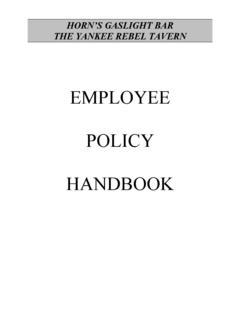Transcription of By Lawrence E. Heiskell, MD Seal A Sucking Chest …
1 One of the most serious of all penetrating Chest injures occurs when a bullet or a piece of shrap-nel rips open a hole in the Chest wall, entering the lung, causing it to collapse. The victim gasps for air, has extreme dif-ficulty breathing and frothy blood often bubbles from the wound. This is the suck-ing Chest wound, and if not recognized and treated promptly the victim will most certainly die before you this type of injury the Chest cavity is no longer a sealed system and unrestricted air is allowed to rush through the wound in the Chest wall and into the Chest cavity dur-ing inhalation.
2 This now-positive intratho-racic pressure system causes the lung on the affected side to collapse. Unless the hole in the Chest wall is patched the lung is unable to untreated collapsed lung results in lack of oxygen in the blood and rapidly leads to loss of consciousness and coma. More bad things begin to happen with the shift-ing of the great vessels to the opposite side of the injury. Moments later, things get even worse when this pressure kinks off the large blood vessels returning all of the body s blood to the heart, resulting in decreased blood flow to the heart.
3 After a few minutes the heart no longer pumps enough oxygen-ated blood and the body goes into irrevers-ible shock and the victim dies. Forget your stethoscope and x-rays. This is a do or die and TreatThe term Sucking Chest wound comes from the audible motion of air into but not out of the pleural cavity and causing an eventual tension pneumothorax. Sucking Chest wounds require an imme-diate occlusive dressing. Over the years there have been many suggested field expedient dressings such as aluminum foil, duct tape and cellophane and Vaseline gauze. In the real world it is probably most likely that when the moment arrives you will not have all your medical gear with you and a field expedient occlusive dressing will have to be improvised.
4 Your ability to think and act quickly will save the victim s life. One could use a zip lock sandwich bag, a large candy wrapper or a piece of a plastic trash bag. A credit or ID card would even work once taped into place. Actually, any air-tight material will work quite well. Make sure that the dress-ing extends at least 2 inches beyond the wound edges so that the dressing is not sucked back into the wound as negative intrathoracic pressure is last resort would be the use of the palm of your own hand. There remains con-troversy or whether one must leave one side open or a 3 sided Chest seal to allow air to escape, which in theory sounds great, but in reality it may not be achievable in the field.
5 Even with these interventions it is pos-sible for the victim to develop a tension pneumothorax which will need to be released. A needle is inserted into the pleu-ral space to relieve the pressure and allow the lung to reinflate. This is another life-threatening advanced occlusive dressing such as the Asherman Chest seal have become the standard in many tactical medics arma-mentarium as a rapid and effective method. Taking ActionBegin by clearly exposing the wound and prepare the area for an occlusive dress-ing. If possible have an assistant with a gloved hand cover the wound while you prepare or improvise the dressing.
6 If there is no assistant and the victim is conscious, place the victim s hand over the wound. It sounds silly but every second counts!Finally, cover the wound with an Asher-man Chest seal or your improvised occlusive dressing. Intubation may be required at this point, even if the patient is conscious, espe-cially if the victim s condition deteriorates. To more fully re-inflate the lung a Chest tube will need to be placed at the , trauma is a surgical dis-ease and it is fixed in the operating room. Advanced medical care and immediate extraction and evacuation to a Level One Trauma Center is strongly TACTICAL WEAPONS Sept.
7 2009 Sept. 2009 TACTICAL WEAPONS 75 TACTICAL MEDICINEBy Lawrence E. Heiskell, MDSeal A Sucking Chest WoundIt s the ultimate case of field-expedient doctoring treat this wound now or they die! The Asherman Chest seal provides a fast and efficient method to treat a Sucking Chest wound. At least one ACS should be mandatory in a tactical medic s seal From a Navy sealThe ACS (Asherman Chest seal ) is manufactured by RUSCH, a leader in the development and manufacture of high quality disposable medical devices for anesthesiology and respiratory care. It was invented by a former Navy ACS is a sterile occlusive dressing for treating open pneu-mothorax and preventing tension pneu-mothroax in Chest injuries as a result of a stab, gunshot wounds and other penetrating Chest trauma.
8 The unique one-way valve is designed to let air and blood escape while preventing re-entry. Battlefield proven, it has become stan-dard issue for the Army, Navy and the British Army, and many Law Enforcement tactical team the ACs The procedure is simple: Don your latex or nitrile gloves Open the pre-packaged seal Use the 4X4 or other means to wipe away sweat, blood or body fluids Peel off the protective paper liner, exposing the adhesive Place the Chest seal over the woundAs in any injury, the area surround - ing the wound may be wet from perspi-ration, blood or body fluids and the adhesive backing may not be sufficient to hold the dressing in place despite wiping of the area before application.
9 I recommend reinforcing the dressing edges with additional adhesive or silk tape to secure the dressing in place. AshermAn Chest seal FeAtUres Unique circular design Pressure-sensitive adhesive, assuring seal Automatically vents Sucking Chest wounds Translucent design allows monitoring of Chest wound Package includes a gauze 4X4 pad to dry the wound before application Ample diameter dressing size Easy-open package After a few minutes the heart no longer pumps enough oxygenated blood and the body goes into irreversible shock and the victim dies.
10 TW





